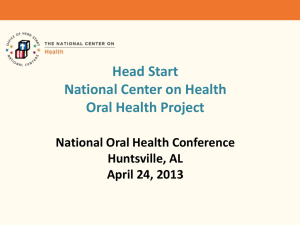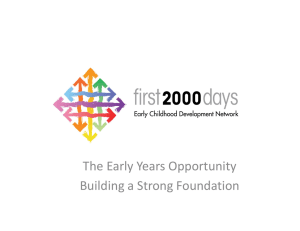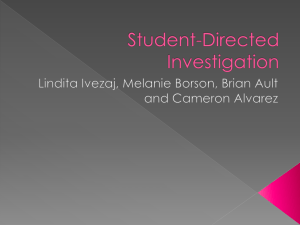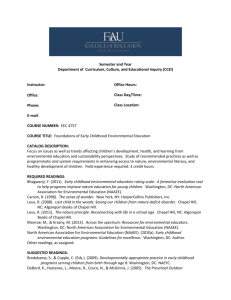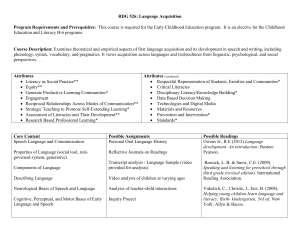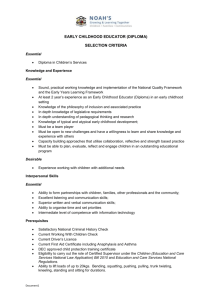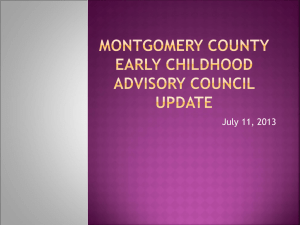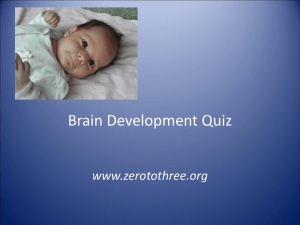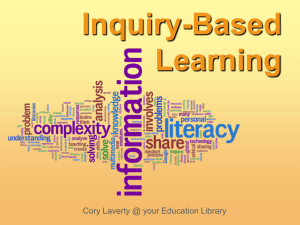Syllabus - Florida Atlantic University
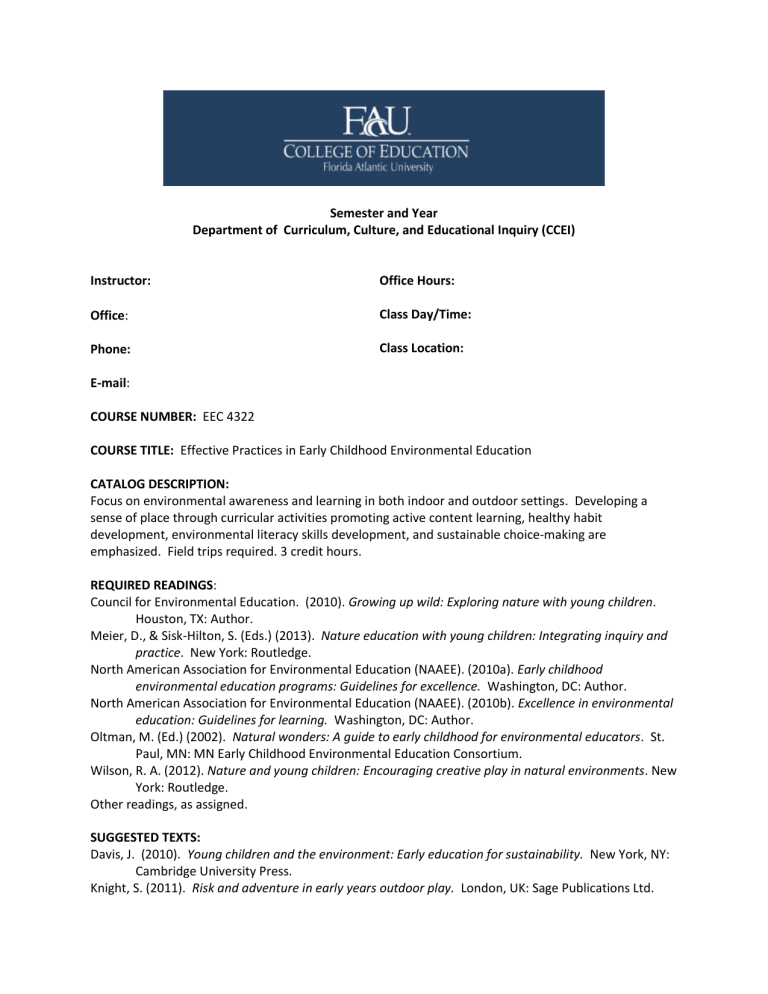
Semester and Year
Department of Curriculum, Culture, and Educational Inquiry (CCEI)
Instructor:
Office:
Office Hours:
Class Day/Time:
Class Location: Phone:
E-mail:
COURSE NUMBER: EEC 4322
COURSE TITLE: Effective Practices in Early Childhood Environmental Education
CATALOG DESCRIPTION:
Focus on environmental awareness and learning in both indoor and outdoor settings. Developing a sense of place through curricular activities promoting active content learning, healthy habit development, environmental literacy skills development, and sustainable choice-making are emphasized. Field trips required. 3 credit hours.
REQUIRED READINGS:
Council for Environmental Education. (2010). Growing up wild: Exploring nature with young children.
Houston, TX: Author.
Meier, D., & Sisk-Hilton, S. (Eds.) (2013). Nature education with young children: Integrating inquiry and
practice. New York: Routledge.
North American Association for Environmental Education (NAAEE). (2010a). Early childhood
environmental education programs: Guidelines for excellence. Washington, DC: Author.
North American Association for Environmental Education (NAAEE). (2010b). Excellence in environmental
education: Guidelines for learning. Washington, DC: Author.
Oltman, M. (Ed.) (2002). Natural wonders: A guide to early childhood for environmental educators. St.
Paul, MN: MN Early Childhood Environmental Education Consortium.
Wilson, R. A. (2012). Nature and young children: Encouraging creative play in natural environments. New
York: Routledge.
Other readings, as assigned.
SUGGESTED TEXTS:
Davis, J. (2010). Young children and the environment: Early education for sustainability. New York, NY:
Cambridge University Press.
Knight, S. (2011). Risk and adventure in early years outdoor play. London, UK: Sage Publications Ltd.
Knight, S. (2013). Forest school and outdoor learning in the early years. London, UK: Sage Publications
Ltd.
Mardel, B. (1999). From basketball to the Beatles: In search of compelling early childhood curriculum.
Portsmouth, NH: Heinemann.
North American Association for Environmental Education (NAAEE). (2010c). Guidelines for the
preparation and professional development of environmental educators. Washington, DC:
Author.
Warden, C. (2012). Potential of a puddle. Livingstone, Scotland: Education Scotland.
AUDIO/VISUAL TECHNOLOGY:
Computer: Blackboard
Computer: APA Style web sites: http://www.wisc.edu/writing/Handbook/DocAPA.html; http://www.english.uiuc.edu/cws/wwrorkshop/bibliography/apa/apamenu.htm http://www.apastyle.org/fifthchanges.html
Computer: E-mail
Computer: Power Point Presentations
Computer: Word processing
Overhead projector, Computer Projector, VCR
CD-ROM’s, DVD, Laser Disks
ELECTRONIC DEVICES
Use of any electronic devices in the classroom should be limited to the content and activities taking place there. Inappropriate use of such devices may result in removal from the classroom, a reduction in your grade, or some other consequence, as determined by the professor.
GUIDELINES USED IN DEVELOPING COURSE OBJECTIVES:
Common Core State Standards (CCSSO)
Early Childhood Environmental Education Programs: Guidelines for Excellence (NAAEE)
Educator Accomplished Practices for FAU (EAP-FAU)
Excellence in Environmental Education: Guidelines for Learning (NAAEE)
Florida Early Learning and Developmental Standards: Birth to Four Years (FL ELDS/B-4)
Florida Early Learning and Developmental Standards for Four-Year-Olds (FL ELDS/4)
Florida Educator Accomplished Practices (FL EAP)
Florida Prekindergarten/Primary Education Specialization Competencies (FL PK/P)
Guidelines for the Preparation and Professional Development of Environmental Educators (NAAEE)
Personnel Standards for Early Intervention and Early Childhood Special Education (CEC/DEC)
Recommendations for Technology in Teacher Education (NCATE)
Standards for Early Childhood Professional Preparation Programs (NAEYC)
The Head Start Child Development and Early Learning Framework (HS CD/ELF)
COURSE OBJECTIVES:
Students will:
1) Design indoor and outdoor environments that promote environmental literacy, active content learning, and healthy development of young children
2) Utilize effective inquiry strategies that promote environmental literacy, active content learning, and healthy development of young children
3) Utilize emergent curriculum planning, content-driven experiences, and assessments that are developmentally appropriate and integrated
CONTENT OUTLINE:
Week Topic(s) Readings, Assignments, and Due Dates
1 Introductions
Syllabus review
Inquiry-based learning
Learning science by exploring the natural world
2
3
Environmental education in the overall curriculum
Emergent curriculum
Integrated curriculum
Education for sustainability or sustainable development
Nature walk – exploring backyards/field trip
Discuss content (environmental literacy, language, math, science, social studies), sensory exploration, inquiry, teacher interaction, facilitation of learning, adaptations for individual children, collaborative possibilities with families, opportunities for dramatic play, art, creative expression, and physical activity
Meier & Sisk-Hilton (2013):
Chapter 1 – Science, Nature, and
Inquiry-Based Learning in Early
Childhood
Chapter 2 – Nature education and teacher inquiry
NAAEE (2010c) – Environmental literacy guidelines
Oltman (2002):
Section I – Understanding young children
Section V – Possible program formats
Meier & Sisk-Hilton (2013):
Chapter 9 – Nature education and the
Project Approach
NAAEE (2010c) – Planning and implementing environmental education
NAAEE (2010c) – Assessment and evaluation
Oltman (2002):
Section II – Planning for active learning
Section III – Essential ingredients for active learning
Growing Up Wild (2010)
Wilson (2012) – Chapters 5 and 6
Davis (2010) – Chapter 1 (optional)
Meier & Sisk-Hilton (2013):
Chapter 5 – Overcoming our fears-
Embarking on a nature journey
Chapter 6 – Naturally speaking-
Parents, children, and teachers in dialogue with nature
NAAEE (2010C) – Fostering learning
Oltman (2002):
Section IV – Supporting active learning
Wilson (2012) – Chapters 3 and 4
Week
4
5
6
7
8
9
Topic(s)
Nature walk – exploring wild places/field trip
Discuss content (environmental literacy, language, math, science, social studies), sensory exploration, inquiry, teacher interaction, facilitation of learning, adaptations for individual children, collaborative possibilities with families, opportunities for dramatic play, art, creative expression, and physical activity
Worm composting/hands-on demonstration
Discuss content (environmental literacy, language, math, science, social studies), sensory exploration, inquiry, teacher interaction, facilitation of learning, adaptations for individual children, collaborative possibilities with families, opportunities for dramatic play, art, creative expression, and physical activity
Growing gardens/field trip
Discuss content (environmental literacy, language, math, science, social studies), sensory exploration, inquiry, teacher interaction, facilitation of learning, adaptations for individual children, collaborative possibilities with families, opportunities for dramatic play, art, creative expression, and physical activity
Water all around us
Discuss content (environmental literacy, language, math, science, social studies), sensory exploration, inquiry, teacher interaction, facilitation of learning, adaptations for individual children, collaborative possibilities with families, opportunities for dramatic play, art, creative expression, and physical activity
Where does food come from?
Discuss content (environmental literacy, language, math, science, social studies), sensory exploration, inquiry, teacher interaction, facilitation of learning, adaptations for individual children, collaborative possibilities with families, opportunities for dramatic play, art, creative expression, and physical activity
Helpful bugs and insects/field trip
Discuss content (environmental literacy, language, math, science, social studies), sensory exploration, inquiry, teacher interaction, facilitation of learning, adaptations for individual children, collaborative possibilities with families, opportunities for
Readings, Assignments, and Due Dates
Meier & Sisk-Hilton (2013):
Chapter 7 – Preschool children explore the forest-The power of wild spaces in childhood
Chapter 8 – Putting the forest on the map-Documentation to further natural inquiry
Meier & Sisk-Hilton (2013):
Chapter 11 – Drawing, photographs, and painting-Learning about the natural world in an urban preschool
Meier & Sisk-Hilton (2013):
Chapter 10 – Promoting play in a school garden and using a blog to document children’s nature explorations
Submit Written Plan for curriculum project
Wilson – Chapter 9
Individual consultations about curriculum project
Individual consultations about curriculum project
Week
10
11
12
Topic(s) dramatic play, art, creative expression, and physical activity
Birds all around us
Discuss content (environmental literacy, language, math, science, social studies), sensory exploration, inquiry, teacher interaction, facilitation of learning, adaptations for individual children, collaborative possibilities with families, opportunities for dramatic play, art, creative expression, and physical activity
Pro-nature literature
Discuss content (environmental literacy, language, math, science, social studies), sensory exploration, inquiry, teacher interaction, facilitation of learning, adaptations for individual children, collaborative possibilities with families, opportunities for dramatic play, art, creative expression, and physical activity
Where does garbage go? Reduce, reuse, and recycle
Discuss content (environmental literacy, language, math, science, social studies), sensory exploration, inquiry, teacher interaction, facilitation of learning, adaptations for individual children, collaborative possibilities with families, opportunities for dramatic play, art, creative expression, and physical activity
Presentation of curriculum projects
Presentation of curriculum projects
Readings, Assignments, and Due Dates
Submit Progress Report for curriculum project
Individual consultations about curriculum project
Individual consultations about curriculum project
13
14
Completed Curriculum Projects due
Peer and instructor feedback
15 Presentation of curriculum projects Peer and instructor feedback
Submit Action Plans
Revised Curriculum Projects due one week after last day of class
COURSE REQUIREMENTS:
1.
Curriculum Project (70%)
This project requires the completion of four components in the following sequence: a) A Written Plan identifying the unit of study and possible curriculum activities (5%) b) A Progress Report providing an outline of the emergent curriculum plan, curriculum web, content experiences, collaborative possibilities with families, ongoing assessment of children’s learning, evaluation of teacher effectiveness, and sequence and schedule of activities; drafts of two lessons addressing all required components must be included (10%) c) The completed Curriculum Project detailing the planned activities from emergent to conclusion (prior to start of another interrelated unit of study), along with six detailed lesson plans (50%)
d) The Revised Curriculum Project incorporating appropriate peer and instructor feedback
(5%)
2.
Action Plans (30%)
Write three action plans addressing at least two of the following: a) Plan for changing school curriculum or practices b) Plan for continued professional development in environmental education c) Plan for the development for a specific curriculum issue or topic d) Plan for naturalizing a school yard or designing a natural playscape
ASSESSMENT PROCEDURES:
GRADING SCALE:
Scores for each assignment are cumulative and the grade scale represents percentage of total points earned. If you do not complete all assignments, you will not be able to earn an “A” in this course.
A = 93-100
B+ = 87-89
A- = 90-92
B = 83-86 B- = 80-82
C+ = 77-79
D+ = 67-69
F = Below 60
C = 73-76
D = 63-66
C- = 70-72
D- = 60-62
EXPECTATIONS:
ATTENDANCE AND PARTICIPATION:
Students are expected to attend all of their scheduled University classes and to satisfy all academic objectives as outlined by the instructor. The effect of absences upon grades is determined by the instructor, and the University reserves the right to deal at any time with individual cases of nonattendance. Attendance includes active involvement in all class sessions, class discussions, and class activities, as well as professional conduct in class.
Students are responsible for arranging to make up work missed because of legitimate class absence, such as illness, family emergencies, military obligation, court-imposed legal obligations, or participation in University-sponsored activities (such as athletic or scholastic team, musical and theatrical performances, and debate activities). It is the student’s responsibility to give the instructor notice prior to any anticipated absence, and within a reasonable amount of time after an unanticipated absence, ordinarily by the next scheduled class meeting. Instructors must allow each student who is absent for a
University-approved reason the opportunity to make up work missed without any reduction in the student’s final course grade as a direct result of such absence.
Religious Accommodation
Florida Law requires that the University provide reasonable accommodations with regard to class attendance, examinations, and work assignments to students who request such consideration in order to observe their religious practices and beliefs. The details of this policy appear on the FAU online
University Catalog under Academic Policies and Regulations: http://www.fau.edu/academic/registrar/catalog/
Punctuality
Students are expected to be on time and to remain for the duration of each class session. Since late arrivals and early departures are disruptive, they will be treated as absences and may affect your grade.
STUDENTS WITH DISABILITIES:
In compliance with the Americans with Disabilities Act (A.D.A.), students who require special accommodations due to a disability to properly execute coursework must register with the Office for
Students with Disabilities (OSD) located in Boca - SU 133 (561-297-3880), in Davie - MOD I (954-236-
1222), or in Jupiter SR 117 (561-799-8585) and follow all OSD procedures. The purpose of this office “is to provide reasonable accommodations to students with disabilities.” Students who require assistance should notify the professor immediately by submitting a letter from the Disabilities Office to your
instructor requesting your need of specific assistance. Without such letter, the instructor is not obligated to make any accommodations for students.
PLAGIARISM AND CHEATING: ACADEMIC HONESTY
Students at Florida Atlantic University are expected to maintain the highest ethical standards.
Academic dishonesty, including cheating and plagiarism, is considered a serious breach of these ethical standards, because it interferes with the University mission to provide a high quality education in which no student enjoys an unfair advantage over any other. Academic dishonesty is also destructive of the
University community, which is grounded in a system of mutual trust and places high value on personal integrity and individual responsibility. Harsh penalties are associated with academic dishonesty, which may include an “F” on the assignment, an “F” in the course, or even removal from the degree program.
Florida Atlantic University Regulation 4.001, “Honor Code, Academic Irregularities, and Student’s
Academic Grievances” is strictly adhered to in this course. The regulation states:
(1) Academic irregularities frustrate the efforts of the faculty and serious students to meet
University goals. Since faculty, students and staff have a stake in these goals, the responsibility of all is to discourage academic irregularities by preventative measures and by insuring that appropriate action is taken when irregularities are discovered. Thus, FAU has an honor code requiring a faculty member, student or staff member to notify an
Instructor when there is reason to believe an academic irregularity is occurring in a course.
The Instructor’s duty is to pursue any reasonable allegation, taking action, as described below, where appropriate.
(2) The following shall constitute academic irregularities:
(a) The use of notes, books or assistance from or to other students while taking an examination or working on other assignments unless specifically authorized by the
Instructor are defined as acts of cheating.
(b) The presentation of words or ideas from any other source as one’s own – an act defined as plagiarism.
(c) Other activities which interfere with the educational mission within the classroom
(e.g., submitting an assignment that was previously submitted in another class).
( http://www.fau.edu/regulations/chapter4/4.001_Code_of_Academic_Integrity.pdf
).
In the Publication Manual of the American Psychological Association (APA, 2009), plagiarism is defined as:
Plagiarism (Principle 6.22). Psychologists do not claim the words and ideas of another as their own; they give credit where credit is due. Quotation marks should be used to indicate the exact words of another. Each time you paraphrase another author (i.e., summarize a passage or rearrange the order of a sentence and change some of the words), you will need to credit the source in the text.
BIBLIOGRAPHY:
Alden, Cech, & Nelson (1998). Field guide to Florida: Birds, animals, trees, wildflowers, insects, weather,
nature preserves, and more. New York: National Audubon Society.
Bhagwanji, Y. (2011). Early childhood environmental education rating scale: A formative evaluation tool
to help programs improve nature education for young children. Washington, DC: North
American Association for Environmental Education.
Banning, W. & Sullivan, G. (2011). Lens on outdoor learning. St. Paul, MN: Redleaf Press.
Boise, P. (2010). Go green rating scale for early childhood settings. St. Paul, MN: Redleaf Press.
Hillsborough County Invasive Species Task Force. (2003). Identification and control of non-native invasive
plants: For homeowners and professionals. Tampa Bay, FL: Southwest Florida Water management District.
Hoot, J. L. & Szente, J. (Eds.) (2010). The earth is our home: Children caring for the environment. Olney,
MD: Association for Childhood Education International.
Louv, R. (2008). Last child in the woods: Saving our children from nature-deficit disorder. Chapel Hill,
NC: Algonquin Books of Chapel Hill.
Louv, R. (2011). The nature principle: Reconnecting with life in a virtual age. Chapel Hill, NC: Algonquin
Books of Chapel Hill.
Mardel, B. (1999). From basketball to the Beatles: In search of compelling early childhood curriculum.
Portsmouth, NH: Heinemann.
Meier, D., & Sisk-Hilton, S. (Eds.) (2013). Nature education with young children: Integrating inquiry and
practice. New York: Routledge.
Monroe, M., & Krasny, M. (2013). Across the spectrum: Resources for environmental educators.
Washington, DC: North American Association for Environmental Education (NAAEE).
North American Association for Environmental Education (NAAEE). (2010a). Early childhood
environmental education programs: Guidelines for excellence. Washington, DC: Author.
North American Association for Environmental Education (NAAEE). (2010b). Excellence in environmental
education: Guidelines for learning. Washington, DC: Author.
North American Association for Environmental Education (NAAEE). (2010c). Guidelines for the
preparation and professional development of environmental educators. Washington, DC:
Author.
Oltman, M. (Ed.) (2002). Natural wonders: A guide to early childhood for environmental educators. St.
Paul, MN: MN Early Childhood Environmental Education Consortium.
Rezba, R. J., Sprague, C. R., McDonnough, J. T., & Matkins, J. J. (2007). Learning and assessing science
process skills (5th ed.). Dubuque, IA: Kendall/Hunt Pub. Co.
Rosenow, N. (2011). Growing with nature: Supporting whole-child learning in outdoor classrooms.
Lincoln, NE: Dimensions Educational Research Foundation.
Wilson, R. A. (2012). Nature and young children: Encouraging creative play in natural environments (2nd ed.). New York: Routledge.
World Forum Foundation & Community Playthings. (2010). The Wisdom of nature: Out my back door.
Redmond, WA: World Forum Foundation.
Theme:
Subtheme:
Title of activity:
Objective(s):
Materials:
Procedures:
Assessment of children’s learning:
Suggested Lesson Plan Format
Level: Novice, Intermediate, Advanced
(select the most appropriate one)
Age Group:
VPK, Sunshine State or Common Core
Standards, Strands/Guidelines:
Vocabulary:
Theme:
Subtheme:
Adaptations/Accommodations:
Extend the learning/content areas:
Suggested Lesson Plan Format
Level: Novice, Intermediate, Advanced
(select the most appropriate one)
